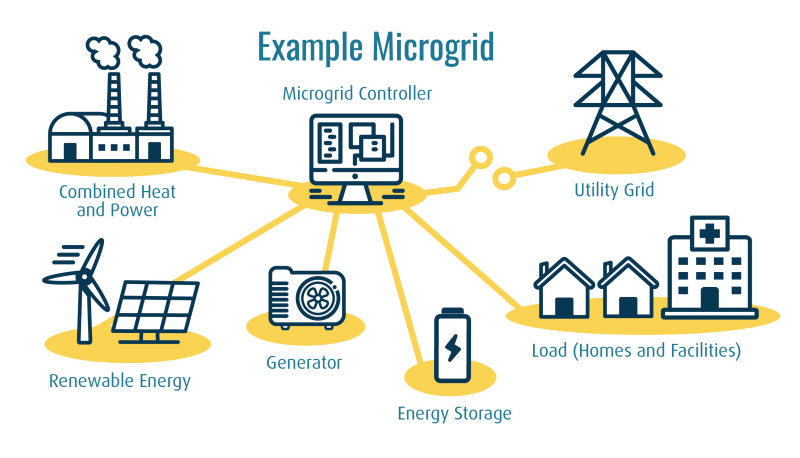Microgrids can provide reliable, resilient, affordable, and efficient electric power to critical infrastructure and electricity consumers. However, microgrid cost-benefit considerations and competing policy and regulatory goals present both opportunities and barriers to maximizing their value. Over the past several years, some State Energy Offices and Public Utility Commissions (PUCs) have explored and learned from various microgrid applications, but many information, research, investment, and policy and regulatory gaps remain. To address these issues and enable microgrids to deliver benefits to the public, NARUC and NASEO have formed the Microgrids State Working Group to share public- and private-sector best practices to advance beneficial microgrid development and take advantage of technical expertise from the U.S. Department of Energy (DOE).
The Working Group is hosting facilitated discussions between State Energy Offices and PUCs to explore microgrid technologies and applications, policy and regulatory frameworks, and financing models to understand the full range of benefits that microgrids can provide to owners / operators, ratepayers, and other stakeholders. A key objective of the Working Group is to highlight and draw lessons from existing microgrid projects. NARUC and NASEO are jointly leading this work in close collaboration with the DOE Office of Electricity and are relying on state input to guide this collaborative initiative. If you are interested in joining the Working Group, please reach out to Kelsey Jones (kjones@naseo.org).
What is a Microgrid?
The U.S. DOE Microgrid Exchange Group defines a microgrid as “a group of interconnected loads and distributed energy resources within clearly defined electrical boundaries that acts as a single controllable entity with respect to the grid. A microgrid can connect and disconnect from the grid to enable it to operate in both grid-connected or island-mode.”

A microgrid generally operates while connected to the grid, but when the electric grid fails or is resource constrained due to a natural or man-made disaster, the microgrid is able to operate on its own to provide power for the facility(ies) connected to it. Microgrids also have the added flexibility of being able to operate with either centralized generation, like combined heat and power systems, or distributed energy resources, such as solar and energy storage.
DOE’s definition allows for many kinds of structures to fall under the definition of a microgrid. The New Jersey Board of Public Utilities qualifies various microgrid structures as follows:

While each state may define microgrids differently, all microgrids can provide several benefits to the community. Those include:
- Improved electric grid reliability;
- Enhanced resiliency for critical facilities;
- Lowered energy costs for businesses and consumers;
- Bolstered grid security; and
- Increased capacity and use of clean energy resources.